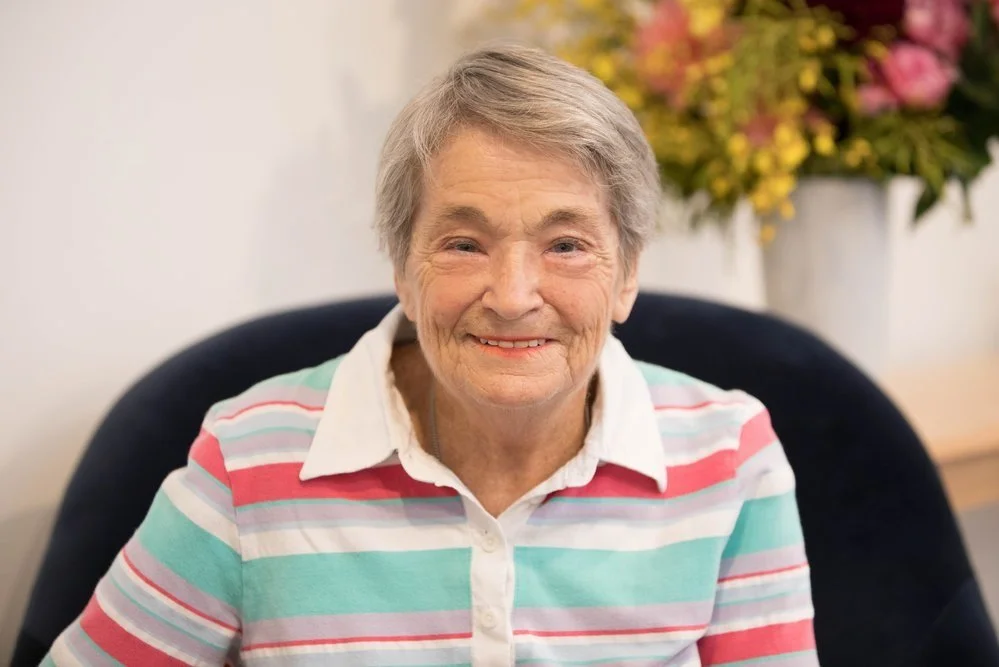Pranks, laughter and service: Deaconess Doreen Garrick
— 16 July 2018
From spirited, mischievous college girl to dedicated, energetic deaconess, Doreen Garrick’s heart for the lost and vigour for the gospel has always been central to her identity. Her story reflects how God can work through the most ordinary moments and smallest decisions of our lives to bring about his glory.
Doreen is the kind of person who you would love to have a cup of tea with, and soak in the stories and wisdom acquired over her 85 years. She is retired and is an active evangelist in her community, making the most of the everyday opportunities that God gives her to spread his gospel. “I have met a lot of people at the bus stop who I’ve got to know. They know that I belong to the church and that I’m a Christian. One couple do come to church at Christmas, as a result of meeting them at the bus stop,” she says. “Going to the gym, I have met up with a lot of Jewish people and they know I’m a Christian. With some of them, we can talk about Christian things when there’s time.”
Doreen was baptised a Catholic, but attended All Saints' Anglican church in Woollahra. After she left school at 15 years old, she worked at a factory during the day, while attending business college at night. One day when she was at a Church Mission Society Summer School, Doreen felt the Lord calling her to the mission field. In response, she enrolled at Deaconess House (now Mary Andrews College) in 1957.
Doreen’s stories of her time at Deaconess House sound like an Enid Blyton novel, full of harmless pranks and mischievous laughter. She describes herself then as a “shy and obedient young woman”, but her own account of those years tells a very different story. During a social event at St Stephen’s Newtown in her first year at Deaconess House, Doreen covered herself in a white sheet and ‘haunted’ the graveyard next to the church, along with the minister’s daughter. “The rector was not amused,” she recalls.
Deaconess House, in Newtown, is now known as Mary Andrews House
Doreen also remembers sneaking out to buy fish and chips one evening, despite being forbidden to leave the college at night. When Doreen and the other two students with her were caught, “we explained we were motivated by hunger, and how the weevils came up from our cereal and said ‘good morning’ when we poured the milk. We were marched to the kitchen, all the cereal was tipped out and, guess what, no weevils!”
Of course, not every comical mishap at the college was caused by Doreen. She recounts how every Monday morning, the then-principal Mary Andrews would lead the chapel service. “One Monday she didn’t turn up and the service had to go ahead without her. When it finished, a student went looking for her. Upstairs was a large linen cupboard. We had been taught to close a cupboard door if we saw one open. A student had done just that – and had locked the principal inside.”
Doreen says her time at Deaconess House “certainly helped to bring me out of myself!” It also provided her with training for deaconess ministry. She was commissioned as a deaconess in 1960 and began to work full-time at St Paul’s Redfern. At St Paul’s, Doreen ran a Girl’s Club and taught Sunday school and Scripture. However, her favourite part of this ministry was parish and hospital visitation, and she contributed to the church’s work of caring for Indigenous Australians and homeless people in Redfern.
But there were some tasks in parish work that her training could never have prepared her for, like spending Saturday evenings assessing the motor of a 22-seat bus with the minister of St Paul’s, ensuring that it would run smoothly the next day. Or when she had to put on her “brave face” and investigate the bathrooms of the church before the children used them, in case there was someone lingering down there.
Doreen worked at St Paul's for five years before moving to Victoria to work for the Mission of St James and St John. She spent two years there, working with children from broken homes. She describes this as a difficult period in her working life. “We were truly tested in patience and understanding,” she says. Surprisingly, one of her trials there was learning how to prepare a roast dinner. “I don’t like cooking,” she says. “What I disliked most was having to learn how to cook properly – a job I hated.”
Following this, Doreen worked as an Anglican Chaplain at the Prince of Wales Hospital for seven years and then worked for the Architect’s Department of the Public Works Department for New South Wales, as she says that “there were no positions in the Sydney Diocese for women at that time”.
Upon her retirement, she moved into Goodwin Retirement Village in Woollahra, and was made President of the Resident’s Committee in 2005.
When asked how she would like to be remembered, Doreen says, “I’m a simple Christian person who was prepared to help those in need whenever the need arose.”


